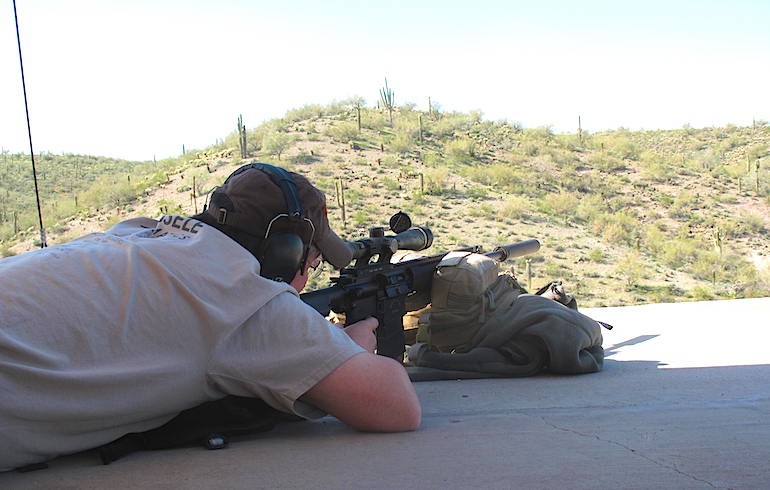5 Keys to Long-Range Accuracy: Shooting Skills, Part II
Last week’s blog post looked at five keys to ensuring your long-range shooting equipment is up to snuff and ready to go the distance. This week, we offer five shooting tips that will keep you on target, no matter how far away that target might be.
Body Alignment—Square the body off behind the rifle so that recoil is traveling straight down your body. Angling your body to the side prevents your body from acting as a dampener to the shockwaves from the shot and may even jerk your body to the side causing misalignment on follow up shots.

Wind—Judging and accurately aiming in the wind is where shooting science meets art form. Shooting in high winds can be challenging even when shooting at targets under 200 yards. Stretch shots out to 400, 600 even 1,000 yards and shooting in any wind, particularly when it can be blowing differently by the target than from where the shooter is sitting, can seem downright impossible. But it’s not. Practicing shooting in windy conditions with the caliber and load to be shot when long-range shooting can help a shooter learn to judge how much the bullet will drift in different crosswinds. Then use items such as bushes, placed flags, dust flying or mirage, visible when looking long distances through high-power optics, to determine how much wind you are dealing with downrange and how much you need to adjust your aim. A good spotter with a spotting scope and watching for dust signatures from where the shot hits can also help you get on target on follow-up shots.
Exhale—Consistency is critical when shooting, and that means shooting at the same spot in your breathing cycle, which can tick the reticle up and down just slightly as the shooter breaths. Shoot at the exhale, when your body is most relaxed, to provide a consistent time to gently squeeze the trigger. Hold the breath for no more than 3 or 4 seconds so you don’t start becoming oxygen deprived, which can cause the body to tremor just enough to mess your shot up.
Squeeze—Again, gently squeeze the trigger. Don’t slap it. Don’t jerk it. The snatch of the trigger that might move the shot a mere inch at 100 yards, could be 10 inches plus at a thousand. Calm those nerves and take a smooth shot.
Follow-Through—Once you pull the trigger back, hold it. Don’t immediately let it pop back, and definitely don’t lift your head off the stock. Force yourself to keep your face planted to the stock and looking through the scope waiting to see the bullet impact. This not only keeps you from unintentionally moving the rifle before the bullet can leave the muzzle, but sets you up better for a follow-up shot. Holding the trigger prior to resetting helps maintain sight of the target and keeps your body in position for a second shot, even as you rack the bolt to reload.




